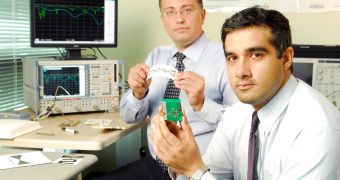Creating things out of thin air has always been a phrase sued to point out the implausibility of things appearing out of nowhere, especially resources of any sort, but it looks like some scientists might have invented something that could challenge the status of that choice of words.
Wireless frequencies have long been used for the purposes of communications, ever since way back when telegraphs and radios came into being.
Turns out, however, that instead of transmitting electromagnetic waves, scientists are now looking to create ways of harnessing it.
These days, one can be reasonably sure that any populated areas are teeming with electromagnetic waves from televisions, satellites, broadcast towers and the like.
In other words, humanity lives in an ocean of electromagnetic activity, and it just so happens that a team from the Georgia Tech School of Electrical and Computer Engineering invented an antenna that turns said waves into energy.
Led by professor Manos Tentzeris and graduate student Rushi Vvas, the team used so-called scavanging devices to capture energy from thin air and power communications chips, networks of wireless sensors and even microprocessors.
FM radio to radar frequencies can be 'harvested,' meaning 100 MHz to 15 GHz, and self-powered wireless sensors have already been created. The team also used inkjet printers in their tests.
"There is a large amount of electromagnetic energy all around us, but nobody has been able to tap into it," said Manos Tentzeris, a professor in the Georgia Tech School of Electrical and Computer Engineering who is leading the research.
"We are using an ultra-wideband antenna that lets us exploit a variety of signals in different frequency ranges, giving us greatly increased power-gathering capability."
One can't really hope that this breakthrough will eventually eliminate the need for batteries or power plugs, but the self-powered wireless sensors invented do have many uses, like identifying chemicals In spoiled foods, bio-monitoring, energy savers that monitor humidity and temperature, etc.

 14 DAY TRIAL //
14 DAY TRIAL //